For every Kwame Brown, there's a Manu Ginobili. Every Anthony Bennett has his Draymond Green. Different factors and variables play into whether or not a prospect over or under-performs relative to draft stock, and some are more predictable than others.
Situation, opportunity, injuries, coaching staffs, mental makeup, family background, work habits, high school recruiting ranking, entitlement versus underdog mentality, and of course physical abilities, among other factors, combine to nudge a prospect closer to steal' or flop' status.
Malcolm Brogdon and Patrick McCaw in 2016, Josh Richardson and Norman Powell in 2015, Nikola Jokic and Jordan Clarkson in 2014 - seemingly every draft has at least two prospects who outplay their draft slot.
Who are the second round-to-undrafted prospects flying under the radar this year? Many of the prospects we may be higher on' than the consensus are reflected in our Top 100 Prospect rankings - Semi Ojeleye, Derrick White, Sterling Brown, to name a few. Here we'll dive into late second-round-to-undrafted type prospects (notably those we haven't featured in-depth yet on the site) who could potentially fill a role in the NBA and over-perform relative to general expectations.DAVON REED
Video:
Potential Role: 3 and D Style Wing
Why He Fits: The 3 and D label is thrown around quite casually nowadays, but Reed truly has the ingredients NBA teams are looking for in this role. He's 6' 5.5 with a 7' 0 wingspan and a projectable frame, is a very willing defender who competes and has versatility on that end (All-ACC Defensive Team), he spaces the floor comfortably (lifetime 37.8% from three on 646 attempts), and has a solid feel for the game. The young senior scored 1.65 points per possession on unguarded jumpers and is capable of knocking down one or two dribble pull ups if run off the line (76th percentile on pull ups). Operating as a role-player at Miami, attempting only 11.2 shots per game as a senior, Reed should be able to step in and defend his position, knock down open shots and play smart within the system early on in his career. With NBA size and length, some defensive versatility, a solid shooting stroke, and impressive intangibles, Reed has a great chance to hear his name called in the second round and has a chance to work his way onto a roster as a two-way wing.
Key Stat: 2.9 made threes per 40 minutes at 39.7%
Drawbacks: While fluid in the open court, Reed doesn't have the explosiveness to match his NBA tools. He plays below the rim in the half court and operates mostly at one speed off the bounce, evident by his lifetime 45% 2-point conversion rate. It's also fair to wonder how dynamic of a shooter Reed is. He's very capable with time and space, but tends to struggle when heavily contested - 1.65 PPP when open to 0.949 PPP when guarded. Reed can also play with more of a mean streak at times on both ends of the floor, as he's not the most naturally assertive player in the world. Given some of his athletic limitations offensively (has very good feet defensively), Reed will have to shoot it efficiently in the minutes he does get, and make all the right reads in order to stay on the floor.
Potential Role: 3 and D Style Wing
Why He Fits: The 3 and D label is thrown around quite casually nowadays, but Reed truly has the ingredients NBA teams are looking for in this role. He's 6' 5.5 with a 7' 0 wingspan and a projectable frame, is a very willing defender who competes and has versatility on that end (All-ACC Defensive Team), he spaces the floor comfortably (lifetime 37.8% from three on 646 attempts), and has a solid feel for the game. The young senior scored 1.65 points per possession on unguarded jumpers and is capable of knocking down one or two dribble pull ups if run off the line (76th percentile on pull ups). Operating as a role-player at Miami, attempting only 11.2 shots per game as a senior, Reed should be able to step in and defend his position, knock down open shots and play smart within the system early on in his career. With NBA size and length, some defensive versatility, a solid shooting stroke, and impressive intangibles, Reed has a great chance to hear his name called in the second round and has a chance to work his way onto a roster as a two-way wing.
Key Stat: 2.9 made threes per 40 minutes at 39.7%
Drawbacks: While fluid in the open court, Reed doesn't have the explosiveness to match his NBA tools. He plays below the rim in the half court and operates mostly at one speed off the bounce, evident by his lifetime 45% 2-point conversion rate. It's also fair to wonder how dynamic of a shooter Reed is. He's very capable with time and space, but tends to struggle when heavily contested - 1.65 PPP when open to 0.949 PPP when guarded. Reed can also play with more of a mean streak at times on both ends of the floor, as he's not the most naturally assertive player in the world. Given some of his athletic limitations offensively (has very good feet defensively), Reed will have to shoot it efficiently in the minutes he does get, and make all the right reads in order to stay on the floor.
DEONTE BURTON
Video:
Potential Role: Small-Ball 4/5
Why He Fits: With LeBron James and Kevin Durant both spending plenty of time at center in the 2017 NBA Finals, it's never been more evident that basketball is changing, especially at the five spot. The key is to be able to defend the highest position possible while creating an advantage on the other end. LeBron has the strength to hold his position against a five, while Durant has the standing reach and rim protection of a center, and because of that both teams are faster and more skilled on the other end.
Burton, while very much a fringe NBA player who clearly isn't LeBron or Durant, could be the next modern-day center to join the movement, in a bench role potentially. While it's definitely an outside the box thought, Burton's combination of strength (overweight 266 pounds at Portsmouth Invitational), explosive leaping ability and 7-foot wingspan allow him to defend the interior, blocking 1.9 shots per 40 minutes and oftentimes bodying up traditional bigs like Caleb Swanigan in the post. Burton also has great feet for his size on the perimeter, as he's able to sit down deep in a stance (when motivated) and slide with perimeter fours or switch and keep guards in front.
Operating from the center position, Burton can be quite a mismatch for opposing big men to handle, as he is comfortable pushing in transition to create for himself or others and has impressive quickness and body control getting to the rim in the half court. Although the sample is small, Burton is a 41% lifetime 3-point shooter, being at his best with time and space, which will come when at the five. Burton can play off closeouts or short rolls, facilitating (2.4 assists per 40) or finishing explosively at the rim. The 23-year-old has some major question marks, but there aren't many athletes like him at his size who can provide some of the offensive versatility he can when dialed in. He may not get drafted, but he's most definitely worth bringing to training camp and keeping in a D-League system as an upside play.
Key Stat: 1.9 blocks per 40
Drawbacks: Burton's mentality and overall lack of a professional approach have been the main obstacles in his collegiate career. While he finally put together a productive, steady senior season at age 23, his first three years were wildly inconsistent (Marquette then Iowa State) and his commitment to the game remains a question mark. He's also quite wild at times offensively (3.1 turnovers per 40 minutes) and he'll have to make shots with some level of consistency to have value in the NBA, as he surely won't enjoy the amount of freedom that he had under Steve Prohm. His effort on the defensive end and the backboards comes and goes and he has the body type that gets out of shape very quickly. Environment will be very important in determining whether or not Burton can maximize his potential and stick in the NBA.
Potential Role: Small-Ball 4/5
Why He Fits: With LeBron James and Kevin Durant both spending plenty of time at center in the 2017 NBA Finals, it's never been more evident that basketball is changing, especially at the five spot. The key is to be able to defend the highest position possible while creating an advantage on the other end. LeBron has the strength to hold his position against a five, while Durant has the standing reach and rim protection of a center, and because of that both teams are faster and more skilled on the other end.
Burton, while very much a fringe NBA player who clearly isn't LeBron or Durant, could be the next modern-day center to join the movement, in a bench role potentially. While it's definitely an outside the box thought, Burton's combination of strength (overweight 266 pounds at Portsmouth Invitational), explosive leaping ability and 7-foot wingspan allow him to defend the interior, blocking 1.9 shots per 40 minutes and oftentimes bodying up traditional bigs like Caleb Swanigan in the post. Burton also has great feet for his size on the perimeter, as he's able to sit down deep in a stance (when motivated) and slide with perimeter fours or switch and keep guards in front.
Operating from the center position, Burton can be quite a mismatch for opposing big men to handle, as he is comfortable pushing in transition to create for himself or others and has impressive quickness and body control getting to the rim in the half court. Although the sample is small, Burton is a 41% lifetime 3-point shooter, being at his best with time and space, which will come when at the five. Burton can play off closeouts or short rolls, facilitating (2.4 assists per 40) or finishing explosively at the rim. The 23-year-old has some major question marks, but there aren't many athletes like him at his size who can provide some of the offensive versatility he can when dialed in. He may not get drafted, but he's most definitely worth bringing to training camp and keeping in a D-League system as an upside play.
Key Stat: 1.9 blocks per 40
Drawbacks: Burton's mentality and overall lack of a professional approach have been the main obstacles in his collegiate career. While he finally put together a productive, steady senior season at age 23, his first three years were wildly inconsistent (Marquette then Iowa State) and his commitment to the game remains a question mark. He's also quite wild at times offensively (3.1 turnovers per 40 minutes) and he'll have to make shots with some level of consistency to have value in the NBA, as he surely won't enjoy the amount of freedom that he had under Steve Prohm. His effort on the defensive end and the backboards comes and goes and he has the body type that gets out of shape very quickly. Environment will be very important in determining whether or not Burton can maximize his potential and stick in the NBA.
DAMYEAN DOTSON
Video:
Potential Role: Shot Maker
Why He Fits: Dotson has taken a long and windy road to Houston, but emerged as a star for Kelvin Sampson. He has helped himself considerably throughout the pre-draft process, winning MVP of the Portsmouth Invitational Tournament and earning a NBA Combine invite. With a realistic chance to get drafted in the second round, Dotson has value as a versatile shot maker who should be able to check ones and twos at 6'5.5 with a 6'9 wingspan and quick feet.
More of a slasher early on in his career, Dotson has turned himself into a fairly dynamic shot maker who can get going off the catch and on the move. The Houston native gets excellent rise on his jumper, has a strong base, and is very comfortable witha hand in his face. He finished his senior season in the 94th percentile on catch and shoot jumpers (88th when guarded' and 93rd when unguarded'), and 72nd percentile off the bounce (90 attempts). He's not going to create much separation off the dribble, but he's very effective in quick-hitting actions and sets his feet quickly off of screens, where he scored 1.25 points per possession.
While not a very prolific shot creator, he's shown a solid feel for the game and the ability to make the simple pass, despite pedestrian assist numbers at Houston. Dotson has good feet on the other side of the ball, and while wiry, possesses the size and length to check ones and most twos in the half court, while rebounding at an excellent rate for his position - 8.5 per 40 minutes. If Dotson can maintain anywhere near the 44.3% 3-point clip he posted as a senior in Houston, while making shots in a variety of ways, he could certainly carve out a role as a bench shot maker who brings energy defensively and on the glass.
Key Stat: 4.2 made threes per 40 minutes at 44.3%.
Drawbacks: While a fairly versatile shot maker, Dotson doesn't bring all that much in terms of NBA level creation ability, and tends to live off of contested looks (jumpers were 84.5% of his field goal attempts last year). Bouncy in the open floor, Dotson's athleticism doesn't always translate to the half court and he isn't overly advanced on the ball, evident by his 0.46 PPP in pick and roll, 0.65 PPP in isolations and 2.0 free throw attempts per 40 minutes. Dotson will really have to be a knockdown shooter from the NBA line to have offensive value, and he's more sound than impactful on the defensive side of the ball (career 1.1 steals per 40 minutes).
Potential Role: Shot Maker
Why He Fits: Dotson has taken a long and windy road to Houston, but emerged as a star for Kelvin Sampson. He has helped himself considerably throughout the pre-draft process, winning MVP of the Portsmouth Invitational Tournament and earning a NBA Combine invite. With a realistic chance to get drafted in the second round, Dotson has value as a versatile shot maker who should be able to check ones and twos at 6'5.5 with a 6'9 wingspan and quick feet.
More of a slasher early on in his career, Dotson has turned himself into a fairly dynamic shot maker who can get going off the catch and on the move. The Houston native gets excellent rise on his jumper, has a strong base, and is very comfortable witha hand in his face. He finished his senior season in the 94th percentile on catch and shoot jumpers (88th when guarded' and 93rd when unguarded'), and 72nd percentile off the bounce (90 attempts). He's not going to create much separation off the dribble, but he's very effective in quick-hitting actions and sets his feet quickly off of screens, where he scored 1.25 points per possession.
While not a very prolific shot creator, he's shown a solid feel for the game and the ability to make the simple pass, despite pedestrian assist numbers at Houston. Dotson has good feet on the other side of the ball, and while wiry, possesses the size and length to check ones and most twos in the half court, while rebounding at an excellent rate for his position - 8.5 per 40 minutes. If Dotson can maintain anywhere near the 44.3% 3-point clip he posted as a senior in Houston, while making shots in a variety of ways, he could certainly carve out a role as a bench shot maker who brings energy defensively and on the glass.
Key Stat: 4.2 made threes per 40 minutes at 44.3%.
Drawbacks: While a fairly versatile shot maker, Dotson doesn't bring all that much in terms of NBA level creation ability, and tends to live off of contested looks (jumpers were 84.5% of his field goal attempts last year). Bouncy in the open floor, Dotson's athleticism doesn't always translate to the half court and he isn't overly advanced on the ball, evident by his 0.46 PPP in pick and roll, 0.65 PPP in isolations and 2.0 free throw attempts per 40 minutes. Dotson will really have to be a knockdown shooter from the NBA line to have offensive value, and he's more sound than impactful on the defensive side of the ball (career 1.1 steals per 40 minutes).
KADEEM ALLEN
Video:
Potential Role: Defensive Stopper
Why He Fits: One of the best perimeter defenders in the NCAA during his two years under Sean Miller, Allen has all the makings of a stopper at the NBA level. The Hutchison Junior College transfer is tough, physical, long (6'9 wingspan) and more than happy to get under the skin of the opponent's best player, whether it's a one, two, or even a three at times. He has excellent feet, uses his body to contain penetration masterfully, and is as good of an on-ball charge-drawer as college basketball has seen in some time. He's active off the ball and willing to get on the floor for 50/50 balls. Offensively, the 24-year-old Allen is very limited but he's showing progress as a spot shooter, is a powerful athlete downhill in space, and plays within himself, operating as a ball mover in playmaking situations. Allen could fit in a Patrick Beverley style role, playing next to a big guard like James Harden, defending the opponent's best guard, spot shooting, playing off closeouts and moving the ball.
Key Stat: Career 1.9 steals and 1.0 blocks per 40 minutes
Drawbacks: Allen offers very little in terms of half-court scoring. He lacks confidence in his three ball despite an improved senior season, doesn't have natural point or combo guard savvy/feel, and isn't overly advanced as a shot creator with the ball. Guards in his ilk are few and far between in today's NBA with such an emphasis on scoring and shooting. There are only so many Tony Allen's, and Kadeem is a bit small (and not near the college player Tony was) to completely fill that role.
Potential Role: Defensive Stopper
Why He Fits: One of the best perimeter defenders in the NCAA during his two years under Sean Miller, Allen has all the makings of a stopper at the NBA level. The Hutchison Junior College transfer is tough, physical, long (6'9 wingspan) and more than happy to get under the skin of the opponent's best player, whether it's a one, two, or even a three at times. He has excellent feet, uses his body to contain penetration masterfully, and is as good of an on-ball charge-drawer as college basketball has seen in some time. He's active off the ball and willing to get on the floor for 50/50 balls. Offensively, the 24-year-old Allen is very limited but he's showing progress as a spot shooter, is a powerful athlete downhill in space, and plays within himself, operating as a ball mover in playmaking situations. Allen could fit in a Patrick Beverley style role, playing next to a big guard like James Harden, defending the opponent's best guard, spot shooting, playing off closeouts and moving the ball.
Key Stat: Career 1.9 steals and 1.0 blocks per 40 minutes
Drawbacks: Allen offers very little in terms of half-court scoring. He lacks confidence in his three ball despite an improved senior season, doesn't have natural point or combo guard savvy/feel, and isn't overly advanced as a shot creator with the ball. Guards in his ilk are few and far between in today's NBA with such an emphasis on scoring and shooting. There are only so many Tony Allen's, and Kadeem is a bit small (and not near the college player Tony was) to completely fill that role.
NIGEL WILLIAMS-GOSS
Video:
Potential Role: Back-Up Rotational Guard
Why He Fits: The Washington transfer proved himself on the grandest of stages at Gonzaga as a hard-nosed point guard who plays a winning brand of basketball. At 6'4 with a 6'7.25 wingspan, Williams-Goss is a big guard by bench unit standards, and he uses his size effectively on both ends of the floor as he likes to operate out of the post, has floaters in the paint (made a ridiculous 34-of-67 as a senior) and, although not a great athlete, puts pressure on the rim in transition. A willing and active defender who can run the show (2.18 assist to turnover), playmake out of pick and roll, and knock down just enough threes and elbow jumpers to keep the defense honest, Williams-Goss projects as the consummate second or guard who can play in a variety of lineup configurations alongside similarly sized or smaller backcourt partners, especially if he can continue to progress as a perimeter shooter - career-best 36.8% from three on 3.7 attempts per 40.
Key Stat: 2.18 assist to turnover ratio
Drawbacks: An average athlete who lacks range on his pull up jumper (0.75 PPP off the bounce), Williams-Goss doesn't provide much in terms of NBA-level half court scoring. More and more teams are playing score-first guards on the ball in second units, somewhat weeding out more old school point guards like Williams-Goss. The Happy Valley native plays mostly 15 feet in off the bounce and doesn't quite have the burst or wiggle to get all the way to the rim with defenses playing to a hand contest. While he takes care of the ball, Williams-Goss can be a little dribble heavy in the half court, and his size and pace-reliant game may not be as effective at the NBA level versus bigger, longer athletes. While he can run a team, there are some questions about how realistic the former Top 40 recruit and Findlay Prep standout is about his level.
Potential Role: Back-Up Rotational Guard
Why He Fits: The Washington transfer proved himself on the grandest of stages at Gonzaga as a hard-nosed point guard who plays a winning brand of basketball. At 6'4 with a 6'7.25 wingspan, Williams-Goss is a big guard by bench unit standards, and he uses his size effectively on both ends of the floor as he likes to operate out of the post, has floaters in the paint (made a ridiculous 34-of-67 as a senior) and, although not a great athlete, puts pressure on the rim in transition. A willing and active defender who can run the show (2.18 assist to turnover), playmake out of pick and roll, and knock down just enough threes and elbow jumpers to keep the defense honest, Williams-Goss projects as the consummate second or guard who can play in a variety of lineup configurations alongside similarly sized or smaller backcourt partners, especially if he can continue to progress as a perimeter shooter - career-best 36.8% from three on 3.7 attempts per 40.
Key Stat: 2.18 assist to turnover ratio
Drawbacks: An average athlete who lacks range on his pull up jumper (0.75 PPP off the bounce), Williams-Goss doesn't provide much in terms of NBA-level half court scoring. More and more teams are playing score-first guards on the ball in second units, somewhat weeding out more old school point guards like Williams-Goss. The Happy Valley native plays mostly 15 feet in off the bounce and doesn't quite have the burst or wiggle to get all the way to the rim with defenses playing to a hand contest. While he takes care of the ball, Williams-Goss can be a little dribble heavy in the half court, and his size and pace-reliant game may not be as effective at the NBA level versus bigger, longer athletes. While he can run a team, there are some questions about how realistic the former Top 40 recruit and Findlay Prep standout is about his level.
JAKE WILEY
Video:
Potential Role: Energy Big
Why He Fits: Taking likely the most incredible path to becoming a NBA prospect of any player in the draft, Wiley has a chance to stick in the NBA as a high-motor bench big who runs the floor, cleans the glass, switches screens and protects the rim in spurts - 3.2 blocks per 40.
He's undersized for a non-floor-spacing big at around 6'7, 215 pounds, but is the ultimate competitor, impacting the game on both ends of the floor with his sheer energy. He's quick off the floor, can finish above the rim in space, and, although he doesn't project as much of an offensive threat, has some touch inside the paint and from the free throw line (82.4% lifetime).
Wiley may not have the size to battle traditional big men in the paint, but with the NBA trending smaller, he certainly has value sliding with perimeter-oriented bigs and switch ball screens. Even if Wiley doesn't hear his name called on draft night, he'll at the very least be a prime candidate for a two-way contract, and given his history, you have to think he'll do everything he can to scratch and claw his way onto an NBA roster.
Key Stat: 25.0 points and 13.5 rebounds per 40 minutes at PIT
Drawbacks: What does Wiley bring to the table at the NBA level outside of energy? He's undersized even in today's NBA at 6'7 215 pounds (although his 7-foot wingspan helps) and functions as more of a five offensively, with mot of his damage coming in the paint. While his competitiveness is certainly a plus, he plays the game very sped up offensively, as he committed 4.6 turnovers per 40 minutes playing in the Big Sky conference. If he's not a passer, shooter or NBA level finisher on offense, does he bring enough to the table on the defensive end to earn playing time? Wiley will have quite the adjustment going from Eastern Washington to the NBA or D-League, which was evident at times at Portsmouth as his defensive fundamentals and overall feel on that end left something to be desired, even if his energy covered up some of his mistakes. The Bellevue, WA native has a tremendous back-story and plays incredibly hard, but he'll likely have to find a couple of things he can hang his hat on consistently in order to crack an NBA rotation, starting potentially with a consistent spot-up jumper.
Potential Role: Energy Big
Why He Fits: Taking likely the most incredible path to becoming a NBA prospect of any player in the draft, Wiley has a chance to stick in the NBA as a high-motor bench big who runs the floor, cleans the glass, switches screens and protects the rim in spurts - 3.2 blocks per 40.
He's undersized for a non-floor-spacing big at around 6'7, 215 pounds, but is the ultimate competitor, impacting the game on both ends of the floor with his sheer energy. He's quick off the floor, can finish above the rim in space, and, although he doesn't project as much of an offensive threat, has some touch inside the paint and from the free throw line (82.4% lifetime).
Wiley may not have the size to battle traditional big men in the paint, but with the NBA trending smaller, he certainly has value sliding with perimeter-oriented bigs and switch ball screens. Even if Wiley doesn't hear his name called on draft night, he'll at the very least be a prime candidate for a two-way contract, and given his history, you have to think he'll do everything he can to scratch and claw his way onto an NBA roster.
Key Stat: 25.0 points and 13.5 rebounds per 40 minutes at PIT
Drawbacks: What does Wiley bring to the table at the NBA level outside of energy? He's undersized even in today's NBA at 6'7 215 pounds (although his 7-foot wingspan helps) and functions as more of a five offensively, with mot of his damage coming in the paint. While his competitiveness is certainly a plus, he plays the game very sped up offensively, as he committed 4.6 turnovers per 40 minutes playing in the Big Sky conference. If he's not a passer, shooter or NBA level finisher on offense, does he bring enough to the table on the defensive end to earn playing time? Wiley will have quite the adjustment going from Eastern Washington to the NBA or D-League, which was evident at times at Portsmouth as his defensive fundamentals and overall feel on that end left something to be desired, even if his energy covered up some of his mistakes. The Bellevue, WA native has a tremendous back-story and plays incredibly hard, but he'll likely have to find a couple of things he can hang his hat on consistently in order to crack an NBA rotation, starting potentially with a consistent spot-up jumper.
LUKE KORNET
Video:
Potential Role: Stretch 5
Why He Fits: 7-footers who can space the floor and protect the rim don't grow on trees, and while not elite at either, the fact that Kornet has even the physical ability to do both gives him a chance at sticking in the NBA. Kornet is one of only 22 NCAA bigs (6'10 or taller) in the past 17 years to average at least 2.0 made threes and 2.0 blocked shots per 40 minutes. He shoots a fairly easy ball, knows how to play within a system, and has fairly good timing around the rim defensively. Kornet has some holes, but he'll certainly get his cracks at sticking in the NBA as it's simply hard to find guys with his natural size and shooting potential.
Key Stat: 2.0 threes made and 2.7 blocks per 40 minutes
Drawbacks: Kornet may fit offensively as a stretch five with a decent feel for the game, but he's quite immobile on the defensive end, struggling to guard pick and roll even in drop situations and leaving much to be desired on the defensive glass. The 7-footer struggles with grit and physicality in traffic, averaging only 6.0 defensive rebounds per 40 minutes, the third worst among centers in the DraftExpress Top 100. Although Kornet was a fairly effective rim protector in the SEC, his average mobility and leaping ability figure to limit him as a defensive anchor in the NBA. Kornet has also been somewhat erratic as a shooter throughout the course of his career - 23% as a freshman, 40.7% as a sophomore, 28% as a junior and 32.7% as a senior. If Kornet isn't making shots, he doesn't bring much to the table, especially with the way the game is trending.
Potential Role: Stretch 5
Why He Fits: 7-footers who can space the floor and protect the rim don't grow on trees, and while not elite at either, the fact that Kornet has even the physical ability to do both gives him a chance at sticking in the NBA. Kornet is one of only 22 NCAA bigs (6'10 or taller) in the past 17 years to average at least 2.0 made threes and 2.0 blocked shots per 40 minutes. He shoots a fairly easy ball, knows how to play within a system, and has fairly good timing around the rim defensively. Kornet has some holes, but he'll certainly get his cracks at sticking in the NBA as it's simply hard to find guys with his natural size and shooting potential.
Key Stat: 2.0 threes made and 2.7 blocks per 40 minutes
Drawbacks: Kornet may fit offensively as a stretch five with a decent feel for the game, but he's quite immobile on the defensive end, struggling to guard pick and roll even in drop situations and leaving much to be desired on the defensive glass. The 7-footer struggles with grit and physicality in traffic, averaging only 6.0 defensive rebounds per 40 minutes, the third worst among centers in the DraftExpress Top 100. Although Kornet was a fairly effective rim protector in the SEC, his average mobility and leaping ability figure to limit him as a defensive anchor in the NBA. Kornet has also been somewhat erratic as a shooter throughout the course of his career - 23% as a freshman, 40.7% as a sophomore, 28% as a junior and 32.7% as a senior. If Kornet isn't making shots, he doesn't bring much to the table, especially with the way the game is trending.
KOBI SIMMONS
Video:
Potential Role: Microwave Scorer
Why He Fits: Despite an underwhelming freshman season at Arizona, the former Top-25 high school recruit does have some intrigue as an upside play for a team that believes in its D-League team and player development infrastructure. For all of his flaws, Kobi Simmons is an elite athlete in terms of twitch, first step and leaping ability in space. His jab step is devastating and he showed flashes as a microwave scorer, going for 14 plus points ten times in the Wildcats' first 20 games. Although often playing a highly inefficient style, Simmons has a lifetime scoring average of 20.1 points per 40 and can get going in a hurry. He's not polished offensively, but he can glide to the rim off the bounce, finish with floaters, or create space off the dribble to get to his pull up on occasion. Simmons has quite a bit of work to do in terms of his ability to impact winning, but there is some potential value in 6'4.5 change of pace scoring guards who can go get a bucket.
Key Stat: 14 points and 4 assists on eight shots in 29 minutes of the second NBA Combine game
Drawbacks: After his strong start to the season, Simmons tailed off drastically, playing a total of 43 minutes in Arizona's final seven games, scoring just 13 total points. His mentality throughout the season really wavered, which was the case at the high school level as well. Simmons plays an inefficient brand of basketball as his overall feel for the game is lacking, and his skill set isn't quite polished enough to be a reliable bucket getter at this level. He's a streaky shooter who doesn't like contact in the paint and has a long ways to go before being able to operate as a lead guard. Simmons is also very underwhelming on the defensive end, where, while very quick laterally, he avoids contact and really struggles versus size at 166 pounds, making him a one-position defender. Simmons is a long way from being able to help an NBA team, and he may need to bottom out first before his talent resurfaces.
Potential Role: Microwave Scorer
Why He Fits: Despite an underwhelming freshman season at Arizona, the former Top-25 high school recruit does have some intrigue as an upside play for a team that believes in its D-League team and player development infrastructure. For all of his flaws, Kobi Simmons is an elite athlete in terms of twitch, first step and leaping ability in space. His jab step is devastating and he showed flashes as a microwave scorer, going for 14 plus points ten times in the Wildcats' first 20 games. Although often playing a highly inefficient style, Simmons has a lifetime scoring average of 20.1 points per 40 and can get going in a hurry. He's not polished offensively, but he can glide to the rim off the bounce, finish with floaters, or create space off the dribble to get to his pull up on occasion. Simmons has quite a bit of work to do in terms of his ability to impact winning, but there is some potential value in 6'4.5 change of pace scoring guards who can go get a bucket.
Key Stat: 14 points and 4 assists on eight shots in 29 minutes of the second NBA Combine game
Drawbacks: After his strong start to the season, Simmons tailed off drastically, playing a total of 43 minutes in Arizona's final seven games, scoring just 13 total points. His mentality throughout the season really wavered, which was the case at the high school level as well. Simmons plays an inefficient brand of basketball as his overall feel for the game is lacking, and his skill set isn't quite polished enough to be a reliable bucket getter at this level. He's a streaky shooter who doesn't like contact in the paint and has a long ways to go before being able to operate as a lead guard. Simmons is also very underwhelming on the defensive end, where, while very quick laterally, he avoids contact and really struggles versus size at 166 pounds, making him a one-position defender. Simmons is a long way from being able to help an NBA team, and he may need to bottom out first before his talent resurfaces.













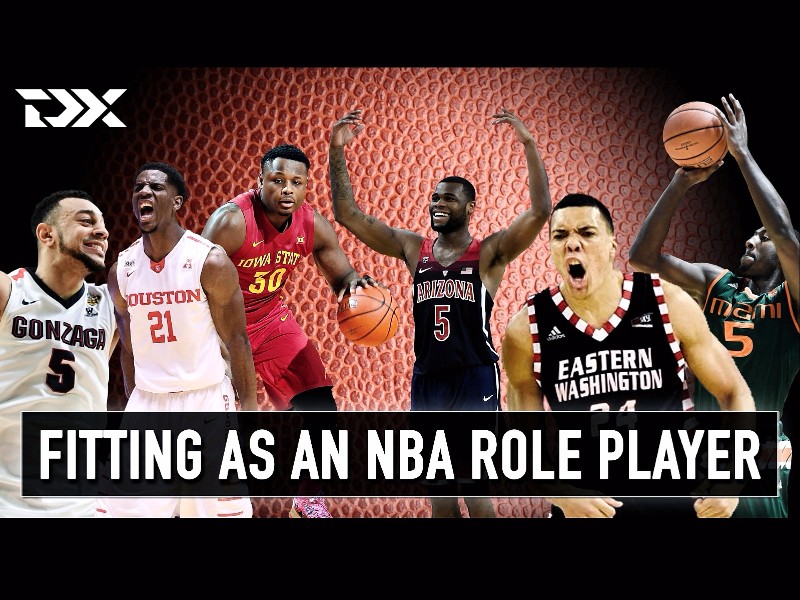




















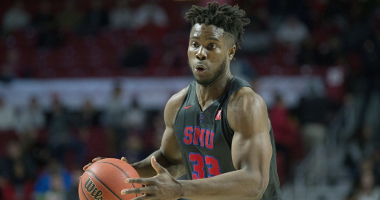

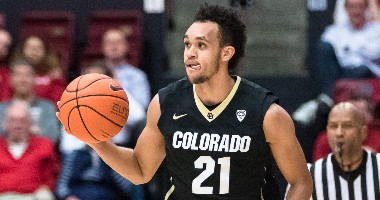

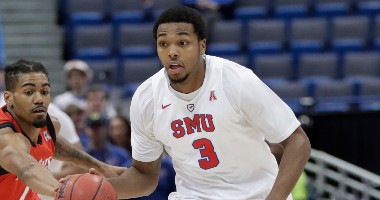


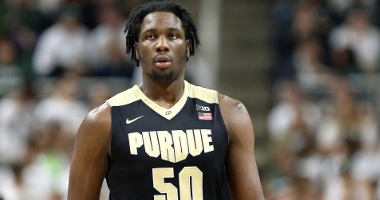



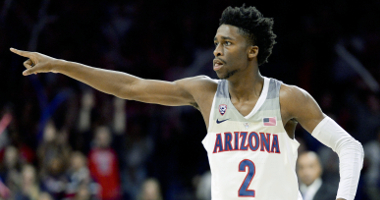





Comments